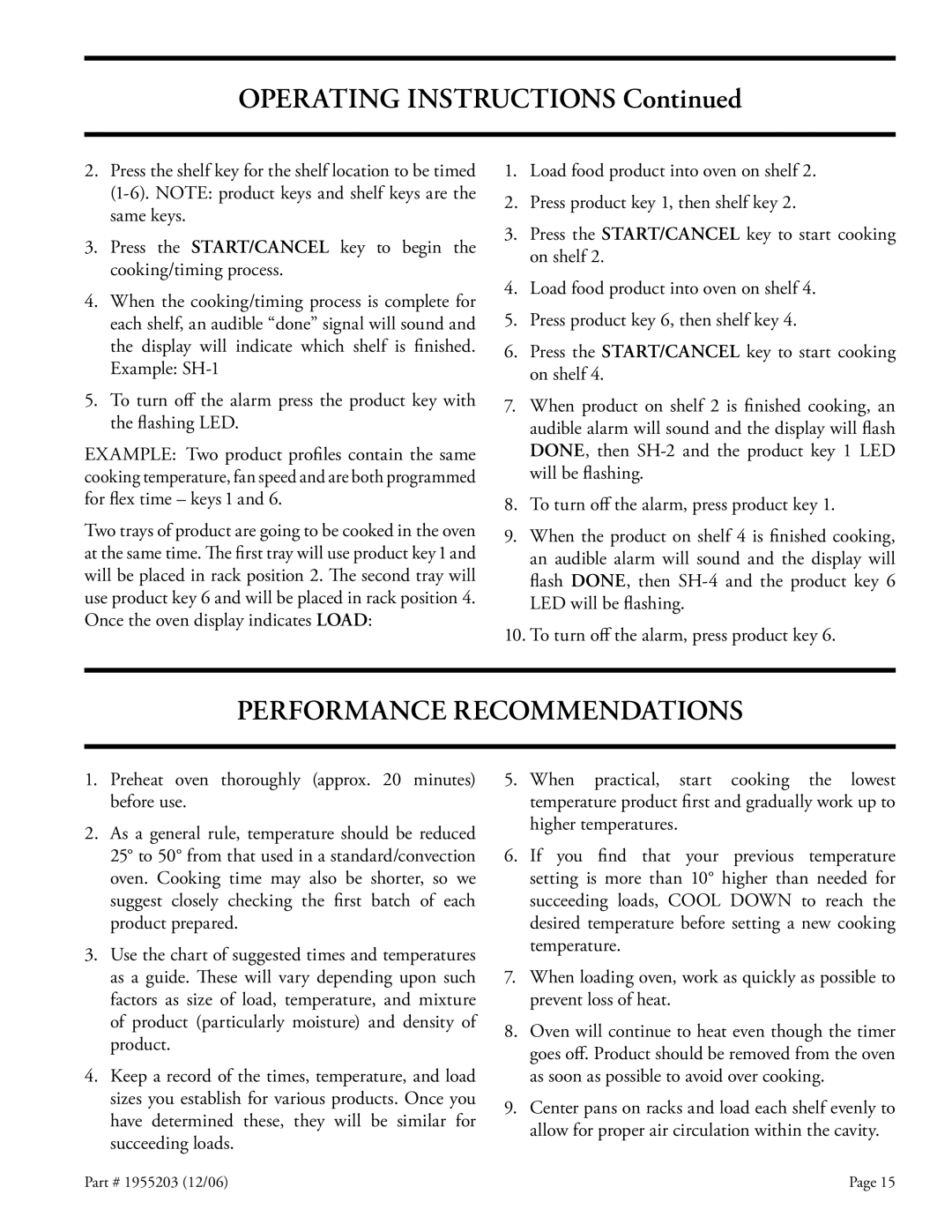
OPERATING INSTRUCTIONS Continued
2.Press the shelf key for the shelf location to be timed
3.Press the START/CANCEL key to begin the cooking/timing process.
4.When the cooking/timing process is complete for each shelf, an audible “done” signal will sound and the display will indicate which shelf is finished. Example:
5.To turn off the alarm press the product key with the flashing LED.
EXAMPLE: Two product profiles contain the same cooking temperature, fan speed and are both programmed for flex time – keys and .
Two trays of product are going to be cooked in the oven at the same time. The first tray will use product key and will be placed in rack position . The second tray will use product key and will be placed in rack position . Once the oven display indicates LOAD:
1.Load food product into oven on shelf 2.
2.Press product key 1, then shelf key 2.
3.Press the START/CANCEL key to start cooking on shelf 2.
4.Load food product into oven on shelf 4.
5.Press product key 6, then shelf key 4.
6.Press the START/CANCEL key to start cooking on shelf 4.
7.When product on shelf 2 is finished cooking, an audible alarm will sound and the display will flash DONE, then
8.To turn off the alarm, press product key 1.
9.When the product on shelf 4 is finished cooking, an audible alarm will sound and the display will flash DONE, then
10.To turn off the alarm, press product key 6.
PERFORMANCE RECOMMENDATIONS
1.Preheat oven thoroughly (approx. 20 minutes) before use.
2.As a general rule, temperature should be reduced 25° to 50° from that used in a standard/convection oven. Cooking time may also be shorter, so we suggest closely checking the first batch of each product prepared.
3.Use the chart of suggested times and temperatures as a guide. These will vary depending upon such factors as size of load, temperature, and mixture of product (particularly moisture) and density of product.
4.Keep a record of the times, temperature, and load sizes you establish for various products. Once you have determined these, they will be similar for succeeding loads.
5.When practical, start cooking the lowest temperature product first and gradually work up to higher temperatures.
6.If you find that your previous temperature setting is more than 10° higher than needed for succeeding loads, COOL DOWN to reach the desired temperature before setting a new cooking temperature.
7.When loading oven, work as quickly as possible to prevent loss of heat.
8.Oven will continue to heat even though the timer goes off. Product should be removed from the oven as soon as possible to avoid over cooking.
9.Center pans on racks and load each shelf evenly to allow for proper air circulation within the cavity.
Part # 1955203 (12/06) | Page 15 |
